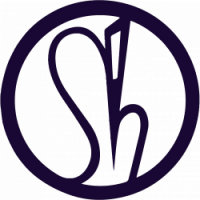The Cyanotype print/photogram process was originally invented in Birmingham by John Frederick William Herschel (1792-1871) as a cameraless photographic technique. This was subsequently used to produce the first illustrated book of botanical prints produced by Anna Atkins (1799 – 1871). The book was called British Algae: Cyanotype Impressions.
My father remembers going to the blueprint shop early on in his working life as an engineer in the car factory, and asking for a blue print. This was then produced using the original Cyanotype formula. He remembers that the print room always smelt of ammonia.
After mixing the solutions myself, I painted the surface of simple print paper. The paper was poor, disintegrated in the washing process and the blue tone was very light. I continued to experiment with the process, producing both dry and wet cyanotypes.
I documented this experimentation in my sketchbook, working through a variety of mediums, natural forms and found objects as well as using my body to cast shadows, noting the intensity, direction and time of the exposures.
Paper Experiments
Plant forms
OHP Film : Drawn Illustration
Painted Glass
Pinhole: Spectrum Circuit Board
From Hex Experiments.
Masks : Paper Translucency (OHP Film)
Masks : Objects
Solutions : Bleach, Household washing soda, lime juice, Sea Salt, sprayed water
Gilding
Sewing
Sewn Electronics
Cyanotype Plague mask (in construction)
360 Gallery (in development – Unity Engine)
iOS App
VR world (in prototype white box model – Unity Engine )
open world (in development – Unreal Engine)
Windows PC


























